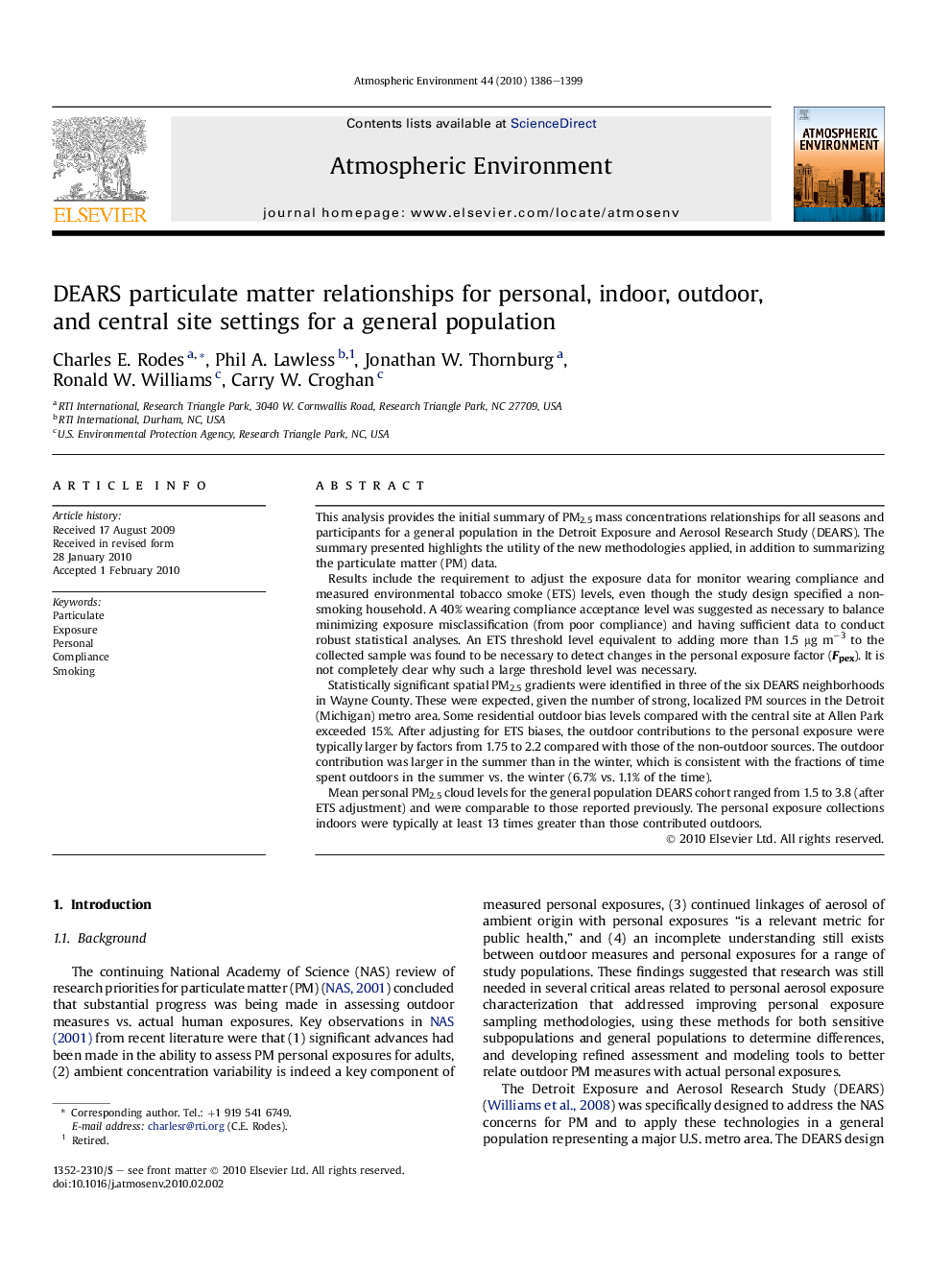| Article ID | Journal | Published Year | Pages | File Type |
|---|---|---|---|---|
| 4440972 | Atmospheric Environment | 2010 | 14 Pages |
This analysis provides the initial summary of PM2.5 mass concentrations relationships for all seasons and participants for a general population in the Detroit Exposure and Aerosol Research Study (DEARS). The summary presented highlights the utility of the new methodologies applied, in addition to summarizing the particulate matter (PM) data.Results include the requirement to adjust the exposure data for monitor wearing compliance and measured environmental tobacco smoke (ETS) levels, even though the study design specified a non-smoking household. A 40% wearing compliance acceptance level was suggested as necessary to balance minimizing exposure misclassification (from poor compliance) and having sufficient data to conduct robust statistical analyses. An ETS threshold level equivalent to adding more than 1.5 μg m−3 to the collected sample was found to be necessary to detect changes in the personal exposure factor (Fpex). It is not completely clear why such a large threshold level was necessary.Statistically significant spatial PM2.5 gradients were identified in three of the six DEARS neighborhoods in Wayne County. These were expected, given the number of strong, localized PM sources in the Detroit (Michigan) metro area. Some residential outdoor bias levels compared with the central site at Allen Park exceeded 15%. After adjusting for ETS biases, the outdoor contributions to the personal exposure were typically larger by factors from 1.75 to 2.2 compared with those of the non-outdoor sources. The outdoor contribution was larger in the summer than in the winter, which is consistent with the fractions of time spent outdoors in the summer vs. the winter (6.7% vs. 1.1% of the time).Mean personal PM2.5 cloud levels for the general population DEARS cohort ranged from 1.5 to 3.8 (after ETS adjustment) and were comparable to those reported previously. The personal exposure collections indoors were typically at least 13 times greater than those contributed outdoors.
